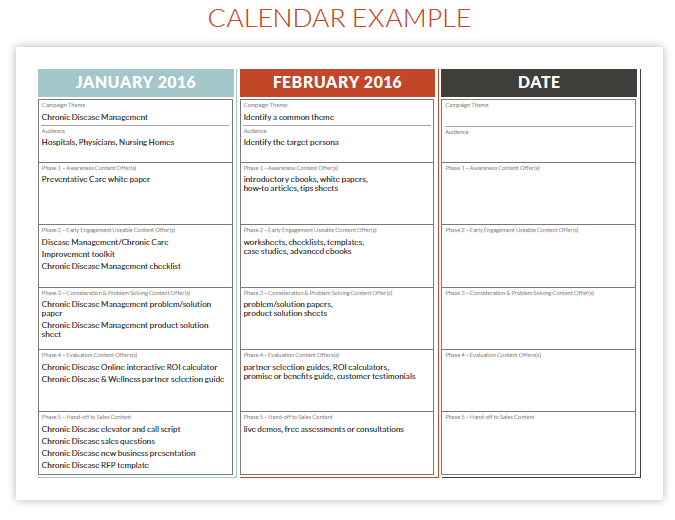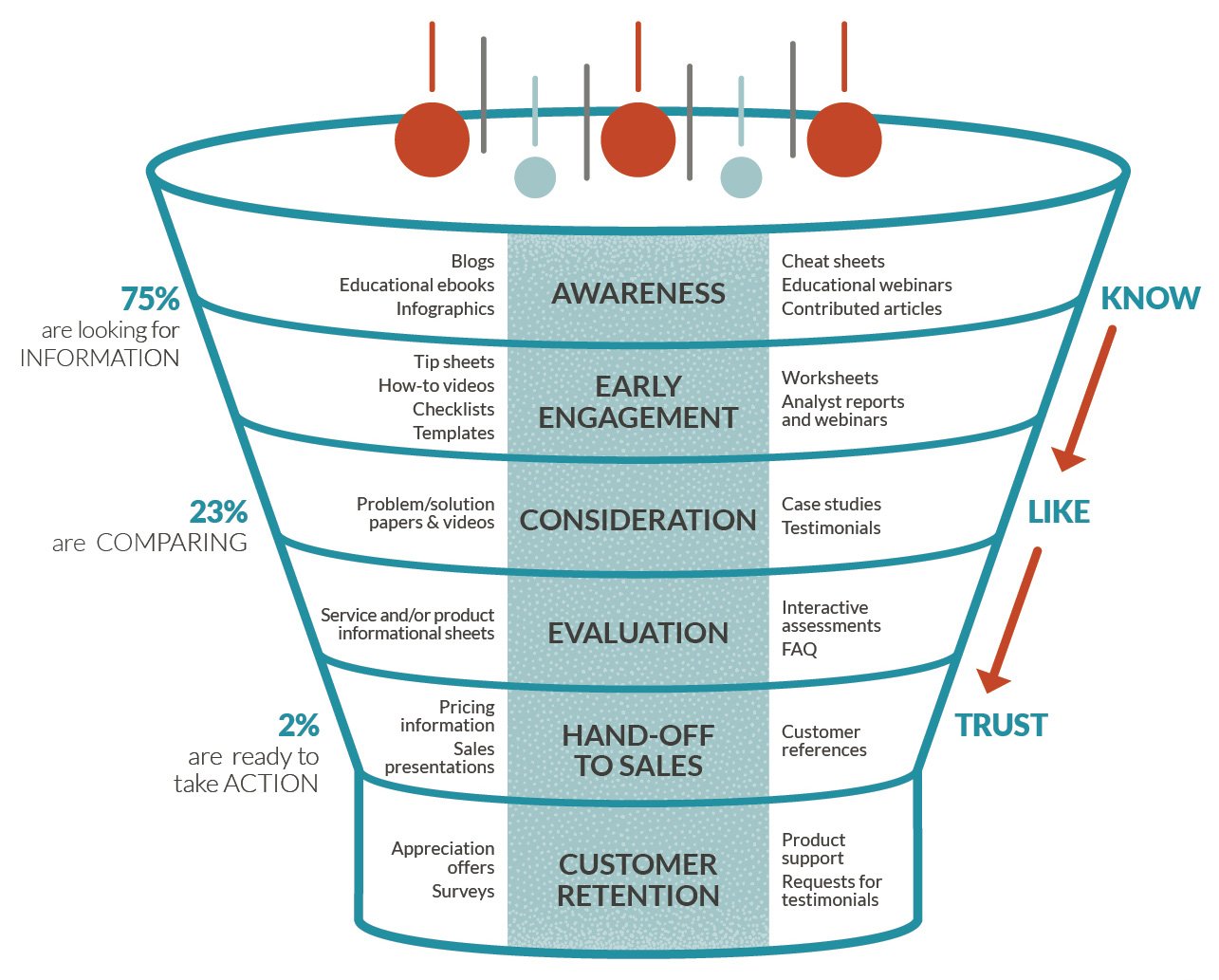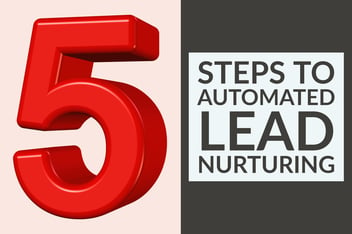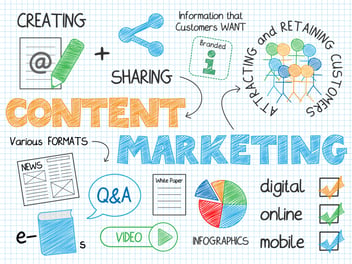Plan A Year’s Worth Of Marketing Campaigns (free template)
As I recently reviewed our website, blog and lead generation metrics, it was interesting to note how most of our most popular downloads from the Inbound Marketing Learning Library are templates. It’s easy to see that our readers are looking for tools that can make their marketing and PR tasks simpler, and I’m glad we are able to provide those tools.
But sometimes, just the template or tool isn’t enough. I think it is important to offer an insight into the philosophy and reasoning behind why we do what we do and why we designed the tools the way we did. Recently, I explained how to use our Lead Nurturing Workflow Template; in this article, I’ll detail the concept behind our Campaign Planning Calendar template.
(Get links to our other most-used resources here: An Inside Look At Our Lead Generation Superstars.)
How to use our Campaign Planning Calendar Template:
The true first step? Download the template here. There, that was easy. Now let’s get down to business.
1. Determine broad topics for each campaign.
In using this campaign planning template to outline a year’s worth of inbound marketing campaigns, the first step will be identifying the broad topic of each campaign.
This could involve a larger brainstorming session bringing in all relevant stakeholders (marketing, PR, sales, customer service, R&D, agency partners, and of course, the C-suite) in order to pinpoint customer pain points, key corporate objectives, and overall corporate goals. Consider each of the different products or services the series of campaigns will need to address, along with the benefits provided through the eyes of various personas. For example, while a healthcare registration and billing software package may appeal to the front office staff because it has an easy-to-use interface, it may have a different benefit from a CFO’s perspective if it improves debt collection processes by prompting a payment on the day of service. Each of those benefits could be a separate campaign topic.
With topics in hand, it’s time to set the calendar.

While our template is designed to provide a year’s worth of monthly campaigns, your timing may vary. You may only be doing two campaigns a year, or you may have the resources to create and execute multiple campaigns each month (potentially segmented by persona or geographic region). Modify the calendar dates to meet your needs.
As you set the timing for your inbound campaigns, be sure to consider how they fit together, both in building awareness and in building content that maximizes your efforts. If content from one campaign can be rewritten to fit another topic, plan your timing accordingly so that your team can make the best use of their time and resources.
2. For each topic or theme, identify the audience.
As I mentioned above, each topic should have a specific audience or buyer persona for whom the content is targeted. In some cases, this may mean a broad topic (such as the registration software I used as an example above) might actually be split into two separate campaigns.
Or you might create slightly different campaigns for the same product or service, but with different content segmented to appeal to specific geographic regions. For example, a nationwide producer of lawncare products might sell the same product all across the country, but the benefits of that product might vary depending on the geographic region — it might help lawns weather dry spells in the Southwest, but add vigor for keeping out invasive plants in Florida and Georgia. Those geographic regions would call for different campaigns, so you would identify each audience differently.
3. Plan out the content for each phase of the campaign.
In developing full-funnel campaigns, we work to create content that is specific to each stage of the buyer’s journey, from awareness (when a prospect first learns about your business) through consideration as a marketing lead and all the way to sales enablement materials designed to help sales close the deal.

While all are related to the campaign topic, and written with the target audience in mind, each will have a different tone based on the needs of that level of the sales funnel.
Awareness
Awareness level content is designed to attract potential customers or clients to your website by addressing the questions and needs they are searching online.
While B2B buyers gravitate first toward third-party sources for information, more than 1 in 3 say they are willing to consider vendor-authored materials in decision making. The key factor is that they need to view you as a trustworthy source. You gain that trust by keeping awareness level content customer-focused — providing helpful information — rather than product-focused.
DemandGen found that 97 percent of business buyers say they want “prescriptive content” that tells them how to do things better. And 4 in 10 prefer content that is visual or interactive.
Among the key content types that can be used for awareness content are social media updates (including video, infographics, outside links, and promotion of your business blog), bylined articles, and blog posts.
Contributed or bylined articles are a staple of public relations strategies that crosses over into marketing easily, and when used in conjunction with social media and a business blog can convert visitors into leads as well. When these articles are submitted to industry media they are great ways of building authority and leadership in your field for both your brand and your executives. These articles should never be sales focused, but instead should relay useful information, insights or predictions for your industry and your customers. They truly meet the definition of awareness content, because they may often be the first introduction an audience has to your brand, and when written well, have the potential to create a positive first impression of knowledge and reliability.
Business blog posts are another key content type that should be included in the awareness level content planning. By its very nature, a business blog is positioned to be found through search, is accessible without requiring any commitment or contact information, and has the potential to facilitate conversations through the use of comments. Again, focus on using your business blog as a way to establish yourself as a reliable source of information, rather than going straight for the sale.
That isn’t to say that everything in your social media feed and business blog should be kept strictly as awareness-level content. You will actually continue to use both of these channels throughout the sales funnel, with occasional content aimed toward leads who are in the consideration stage, and even those in the evaluation stage and about to be handed off to sales. Including a sprinkling of case study and customer testimonial content in your social media and blog helps ensure you reach all levels of the sales funnel with those channels.
Early engagement
Sometimes, we blur the lines a bit between awareness and early engagement, but both need to remain focused on information that is useful to readers without being entirely brand-focused.
This can include research-based content such as reports and whitepapers based on consumer surveys. According to a 2017 DemandGen study, 77 percent of business buyers have used a whitepaper to research a purchase decision in the last 12 months.
Whitepapers and reports detailing original research can be a great option as early engagement inbound marketing content. The data contained in such reports can provide value to prospects, influencers, and existing customers, and helps to establish your company as a source of reliable information and a leader in your industry.
Prospects are most likely to find your early engagement content as result of first encountering your more public awareness content, such as contributed articles or social media content. Perhaps they read a bylined article you submitted that highlight information from a survey and noted that it is part of a recently published report. They might then search for that report and download it from your website, converting a prospect into a lead.
We have also found that useable offers, such as this template, along with checklists and cheat sheets have been valuable lead conversion tools in the early engagement stage of the funnel. No one is committing to a consultation or phone call from us by downloading these resources, but we offer something of value, along with an additional window into our methodology and philosophy regarding integrated PR and marketing. Early engagement level content in your campaign can be a way of helping prospects get to know you a little bit better.
Consideration
While many of the individuals who encounter and consume your awareness and early engagement level content may be casual readers, not really looking for more than some general information, it is important to create content that meets the needs of those prospects and leads more actively seeking a solution. B2B buyers say that one of the key stumbling blocks to the buying process is a lack of information — both applicable to their purchase and overall. In fact, lack of information was cited by more than 1/3 of respondents to a June 2018 Showpad survey as slowing the B2B buying process.
Two key kinds of information, and types of content, work well to keep leads engaged in the middle of the sales funnel: detailed solutions to problems, and stories of others who solved the same problem.
Build into your campaign strategy problem/solution papers that dig into specific pain points your target customer may be struggling to solve. And then share success stories of how others have solved those problems (with your solution) with case studies and testimonials. (Additional reading: Consideration Stage Content Sets the Stage for a Sales Win.
I want to point out here that while I have only briefly touched on video as one type of social media content in the awareness category, video can be used in many different levels of the sales funnel for different needs. In this consideration stage, think about creating a case study in video format, or developing a video of short testimonials from multiple satisfied customers. (Check out this example from Cisco.) Video could also be used in the early engagement stage by presenting report information in a video format or creating a how-to video to go along with a template. I would also consider this video I created, about setting goals for inbound marketing performance, as an early engagement to consideration level piece, touching on the same level of expertise as a problem/solution paper would.
Evaluation
Further down the sales funnel, you need content that reaches those leads who are getting serious and nearing a decision. These are the tools that will help them evaluate their options and make the best decision for their business.
That would include ROI calculators, which allow them to input specifics about their business to determine what results they can expect from your solution. You might also want to consider additional content, such as blog posts or downloads that offer a guide to choosing a solution with criteria that reach beyond strictly the numbers of an ROI calculator.
An example of this would be a blog post like this: How To Choose A Survey Partner or a download such as our HubSpot Agency Partner Checklist.
Hand-off-to-sales (aka sales enablement)
As you plan your campaign, don’t forget to bring marketing’s knowledge and content creation expertise into the last stage and be involved in creating the materials that sales will use to close the deal on marketing qualified leads. It just makes sense to ensure that tools such as call scripts, sales presentations, bid templates and even elevator speeches for account reps to use when out and about fit your brand positioning and message and continue the campaign through to its positive conclusion. Include these sales enablement materials in your overall campaign strategy.
Fill in a full column of the Campaign Planning Calendar Template for each campaign in your yearlong strategy, being sure to include at least one piece of content for each stage of the sales funnel. In most cases, you will likely have more than one. Several stages may include both a downloadable asset or other gated content, along with ungated blog posts and social media content, making it possible to capture new leads at all stages, as well as share new content with leads through a nurturing workflow.
4. Implement the plan!
If all that planning sounds like a lot of work, buckle up, because you are just getting started. But you have laid the groundwork needed to guide you through the rest of your campaign development and implementation.
Your next steps are:
1. Create the content outlined in the campaign plan and make it great.
2. Promote that content through as many channels as possible.
3. Develop your lead nurturing workflows.
5. Revisit your campaign plan throughout the year to revise it as you go.
Planning out full campaigns as a series of campaigns that work together is a key component of successful marketing and public relations that is focused from the beginning on achieving corporate goals, rather than randomly reacting to ideas and throwing together haphazard content with no understanding of what you are truly working toward.
If you want to find out more about how we approach campaign planning at JONES, download our Campaign Planning: The JONES Solution paper for more details, or schedule a no-obligation call with me to chat about how you can improve the ROI of your marketing budget through strategic campaign planning and execution.
-1.png?width=1652&height=294&name=Jones(RGB)-1.png)









.png?width=352&name=10%20Steps%20To%20Inbound%20Marketing%20Campaigns%20(And%2020+%20Tools%20To%20Complete%20Them).png)


